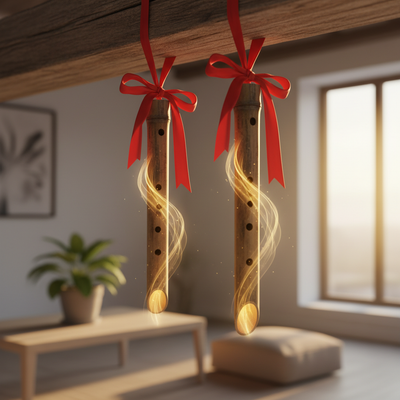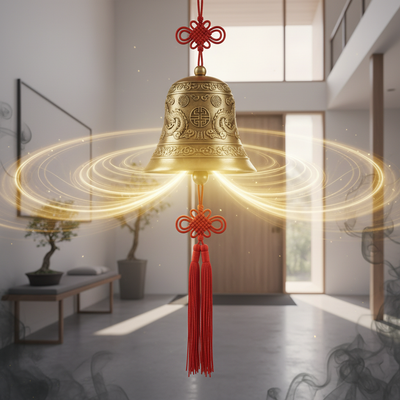Introduction
The appeal of a loft is clear. High ceilings, large open spaces, and lots of natural light create a feeling of freedom and possibility. But when it comes to making a peaceful bedroom in this big space, these same features can become real problems. The openness that feels freeing during the day can feel uncomfortable and unsafe at night. How do you create a cozy, safe space in an area with few walls and very high ceilings? This is a common problem for loft owners. This guide gives you a complete, step-by-step way to use proven feng shui ideas in your loft bedroom. We will show you how to turn its main challenges into its biggest strengths, creating a space that is not only beautiful but also deeply calming and balanced.
Special Loft Problems

To create a solution, we must first understand the problem. Loft living brings special situations that can disturb the calm, steady energy needed for a restful bedroom. Understanding these specific issues is the first step toward fixing them. From a feng shui view, the main goal of a bedroom is to build yin, or quiet, healing energy. The typical features of a loft often encourage the opposite: active, fast-moving yang energy. This imbalance is what can lead to feelings of restlessness and worry. By identifying these challenges, you can begin to apply focused fixes that bring back balance and create the sanctuary you deserve.
Energy Flow in Lofts
In feng shui, Qi is the vital life force energy that flows through all things, including our homes. For the best well-being, Qi should flow smoothly and gently, like a winding stream. In a large, open loft with high ceilings, Qi can behave in unpredictable ways. It can rush through the uncluttered space too quickly, creating an unsettled feeling. Or, in the vast vertical space, energy can become stuck or "lost," failing to nourish the people living there. The goal is to guide and manage this Qi, slowing it down and encouraging it to pool gently in your personal sleep area, much like a calm spot in a river.
Common Building Problems
Lofts often come with building features that, while visually striking, can create specific feng shui imbalances. Here are the most common problems:
- Slanted Ceilings: A ceiling that slopes down over the bed creates what is known as oppressive energy, or Sha Qi. This can feel heavy and limiting, leading to unconscious pressure that may disrupt sleep, cause headaches, or contribute to a feeling of being weighed down in life.
- Exposed Beams: Heavy, exposed beams, especially when located directly over a bed, are considered a source of "cutting" energy. They symbolically "slice" through the energy field of the people sleeping below, which can show up as pressure, health issues related to the body part under the beam, or even a sense of division in a couple's relationship.
- Stairs Leading to the Bedroom: When a staircase directly faces the bed, it creates a path for Qi to rush directly toward you while you sleep. This can be very unsettling, leading to restless nights. It can also create a sense of instability, as if your energy is constantly draining away down the stairs.
- Lack of Separation and Privacy: The main feature of a loft—its openness—is a significant challenge for a bedroom. Without clear boundaries, the active, public energy of the living area bleeds into the private, restful space of the bedroom. This makes it difficult for your mind and body to "switch off" and transition into a state of deep rest.
The Commanding Position
The single most important principle in feng shui for a bedroom is placing your bed in the Commanding Position. This is the foundation of creating a sense of security, control, and peace in your personal space. When you are in command, you are symbolically in command of your own life. You feel safe, supported, and able to handle whatever comes your way. This feeling of security is essential for achieving deep, healing sleep. In a loft, with its unusual layouts and lack of traditional doorways, achieving this position requires a bit of creativity, but the benefits are well worth the effort.
Defining the Command Position
The Commanding Position is a specific furniture placement that maximizes your sense of security and awareness. The principle is based on our basic need to feel safe from potential threats, allowing our nervous system to relax fully. The ideal Commanding Position for a bed meets three criteria:
1. You can see the door to the bedroom from your bed without being directly in line with it.
2. The bed is positioned diagonally furthest from the door.
3. You have a solid wall behind your head, providing support and stability.
This placement ensures you are not caught by surprise, allowing you to see who or what is entering your space. Being out of direct alignment with the door prevents the "coffin position," where Qi rushes directly at you, which can be draining and unsettling.
Achieving Command in Lofts
What happens when your "door" is the top of a staircase, or there's no clear entryway to your sleeping area? Lofts demand flexible solutions. If a textbook commanding position is impossible, you can create a functional equivalent.
* Use a High, Solid Headboard: If you cannot place your bed against a solid wall, a sturdy, tall headboard acts as a substitute "mountain," providing that crucial feeling of support and protection from behind. Avoid headboards with slats or bars, as they allow Qi to pass through and do not offer the same sense of stability.
* Use a Mirror Strategically: If you cannot see the entry from your bed, you can place a mirror in a position that allows you to see a reflection of the entrance. Use this cure with caution. A basic rule of bedroom feng shui is that a mirror should never reflect you while you are in bed, as this is believed to disturb sleep and can even invite third-party interference in a relationship. The mirror must be positioned to see the door, not the bed.
* Create a Virtual Wall: Use furniture to your advantage. A solid bookshelf, a beautiful screen, or even a tall dresser can be placed strategically to create a more defined entryway and a protective barrier. This helps to slow down approaching Qi and gives you a greater sense of enclosure and security.
Fixes for Common Issues
Once you've established the best possible position for your bed, the next step is to address the specific structural challenges of your loft. These "cures" are practical adjustments that neutralize negative energy and enhance the positive, supportive qualities of your space. Think of this as a toolkit for fine-tuning your environment. Each cure is designed to counteract a specific problem, transforming a source of energetic stress into a point of balance and harmony. The goal is not to fight against the architecture of your loft, but to work with it, using simple tools to guide energy and create a serene atmosphere.
Loft Bedroom Cure Toolkit
This table provides a clear, scannable guide to solving the most common loft bedroom issues. We have outlined the challenge, its energetic impact, and one or more practical cures you can implement.
| The Challenge | The Feng Shui Impact | The Cure(s) |
|---|---|---|
| Slanted Ceilings | Oppressive energy (Sha Qi), feelings of pressure, disrupted sleep. | • Uplighting: Use floor lamps or sconces to shine light upwards, visually and energetically "lifting" the ceiling. • Paint: Paint the ceiling and slanted wall a single, light, airy color to make it recede. • Canopy Bed: A fabric canopy or a four-poster bed creates a flat, protective "ceiling" directly over you, deflecting the oppressive energy. |
| Exposed Beams | "Cutting" energy, creates a sense of being divided or under pressure. | • Fabric: Drape soft, light-colored fabric like muslin over the beams to soften their hard edges. • Hollow Flutes: Hang two bamboo flutes on the beam with the mouthpieces pointing up, in a "V" shape. This is a traditional cure meant to lift the heavy energy. • Bed Placement: The simplest and most effective cure is to ensure your bed is not positioned directly under a beam. |
| Stairs Facing the Bed | Rushing Qi, instability, feeling of energy "draining" away. | • Create a Barrier: Place a solid folding screen, a low bookshelf, or a row of healthy, tall plants between the foot of the stairs and the bed to block and slow the rushing Qi. • Hang a Crystal: Hang a multi-faceted feng shui crystal from the ceiling, halfway between the foot of the stairs and your bed. The facets will disperse the fast-moving energy in all directions. |
| Lack of Separation | Blurring of rest/active energy, difficulty "switching off." | • Room Dividers: Use stylish screens, sheer curtains on a ceiling track, or open-backed shelving (e.g., a Kallax unit) to create a visual and energetic "room within a room." • Rugs: Use a large, plush rug to anchor the sleeping area. This visually defines the space and creates a soft, yin foundation for your sanctuary. |
Using the Bagua Map
For those looking to take their feng shui practice a step further, the Bagua map is a powerful tool. It allows you to see your space not just as a physical structure, but as an energetic map of your life. Applying this map to an unconventional space like a loft can seem difficult, but it's a highly effective way to diagnose which life areas need support and to activate them for positive change. By understanding where areas like Love, Wealth, and Health exist in your loft, you can make small, intentional adjustments to enhance those aspects of your life.
What is the Bagua?
The Bagua is an energy map used in feng shui that corresponds to nine key areas of life: Wealth & Prosperity, Fame & Reputation, Love & Marriage, Family & Ancestors, Health (center), Children & Creativity, Knowledge & Self-Cultivation, Career & Life Path, and Helpful People & Travel. When you overlay this grid onto your floor plan, you can identify which part of your home affects which part of your life. The map provides a framework for making targeted enhancements to attract positive energy to specific goals and intentions.
How to Use the Bagua
Applying the Bagua is a straightforward process, even in a loft. The key is to first decide the scope: are you mapping the entire loft, or just the defined bedroom area? For a more complete approach, start with the entire loft.
- Identify the "Mouth of Qi": This is the formal front door you use to enter the loft apartment. Stand at your front door, looking into the space.
- Align the Map: Mentally place a three-by-three grid over your entire floor plan. The bottom row of the Bagua map (Knowledge, Career, Helpful People) always aligns with the wall containing your front door.
- Overlay and Observe: With the map aligned, you can now see which life areas fall into which parts of your loft. The area to the far left as you enter is Knowledge, the center is Career, and the far right is Helpful People. The far back left corner of your entire loft is the Wealth corner, and the far back right is the Love corner.
Activating Bagua Areas
Once you know where each area is, you can activate it. This is where lofts offer a unique opportunity. Even if a life area falls in an "awkward" spot, you can use the open space to your advantage.
- Example 1: Love & Marriage. Let's say your Love corner (far back right) is partially occupied by a structural column. You can still activate this area. Place a piece of art depicting a happy couple on the nearest wall. Set a small table next to the column and place a pair of objects on it, such as two rose quartz crystals or a pair of mandarin ducks, which are symbols of committed love.

- Example 2: Wealth & Prosperity. If your Wealth corner (far back left) is empty or undefined, this is a perfect place to add a tall, vibrant plant with rounded leaves, like a jade plant or a money tree. The upward growth and lushness symbolize growing wealth. Adding an element of water, like an image of a flowing waterfall, can also activate this area. The key is to place an object with intention in the correct zone.
A Loft Transformation
Theory is valuable, but seeing principles in action provides true clarity. At THE QI FLOW, we frequently work with clients who are struggling to find peace in their architecturally stunning but energetically challenging homes. This case study illustrates how targeted feng shui adjustments can have a profound impact. It demonstrates that you don't need a massive renovation; small, strategic changes can completely transform the feel of your space and, consequently, your well-being.
A Client's Problem
We were contacted by Sarah, a graphic designer who had just moved into her "dream" industrial loft in the city. She loved the look—the brick walls, high ceilings, and massive windows. But after a few weeks, the dream felt more like a nightmare. She was sleeping poorly, waking up frequently, and feeling a constant, low-level anxiety she couldn't shake. "I feel exposed and on edge," she told us. "It's like I can never fully relax, even when I'm in bed. This space is supposed to be my sanctuary, but it feels chaotic."
Our QI FLOW Process
Our team conducted a consultation and immediately identified a "trifecta" of classic loft challenges.
1. Her bed was placed directly under a heavy, dark-stained wooden beam, creating oppressive and cutting energy right over her as she slept.
2. The bed was also in the direct path of the open staircase leading up to the loft, causing Qi to rush towards her all night.
3. The vast, undefined space meant there was no separation between her "active" work area and her "restful" sleep area. The energy was scattered and unsettled.
Sarah was experiencing the physical and emotional effects of these energetic imbalances. Her space was not supporting her need for rest and security.
Solution and Result
We proposed a series of simple, low-cost adjustments that could be implemented over a weekend.
1. Repositioning the Bed: The first and most critical change was moving her bed. We found a corner that placed her in a commanding position, with a solid wall behind her and a clear view of the staircase entrance, but not directly in line with it. This immediately took her out from under the oppressive beam.
2. Creating a Barrier: To block the rushing energy from the stairs, we suggested a beautiful, six-foot-tall carved wooden folding screen placed at the foot of her bed. This acted as a graceful but solid barrier, slowing down the Qi and creating a sense of an "entryway" to her sleep zone.
3. Grounding the Space: To define the bedroom area and introduce yin energy, we recommended a large, circular, high-pile wool rug in a soft cream color. The circle shape promotes gentle, flowing energy, and the plush texture provided a grounding, earthy feel.
4. Lifting the Energy: Finally, to counteract the general heaviness of the high ceilings, we had her place three floor lamps in the bedroom zone, all aimed upwards. This uplighting visually lifted the space and dispersed any stagnant energy.
Within a week, Sarah's feedback was incredible. She reported sleeping through the night for the first time since moving in. "The change is unbelievable," she said. "The screen makes me feel so protected, and the whole area just feels... calmer. It's finally the cozy, safe haven I imagined."
Color, Light, and Elements
Beyond furniture placement, the sensory experience of your loft bedroom plays a crucial role in its feng shui. The colors on your walls, the quality of your light, and the balance of materials all contribute to the overall energy. In a large, open loft, these elements are especially powerful tools for grounding the space and creating a specific mood. An overabundance of hard surfaces, metal, and wood is common in lofts, which can feel cold and stark. By consciously introducing balancing colors, lighting, and elements, you can craft a much warmer and more inviting atmosphere.
Color Psychology
Color is a form of energy with a measurable frequency, and it has a profound psychological impact. In a vast loft space, color can be used to ground the energy and create a sense of calm. Stick to soothing, earthy tones that connect you to the stable energy of the Earth element. Think of soft whites, warm beiges, gentle taupes, and muted shades of blue and green. These colors are naturally calming to the nervous system. Scientific studies have shown, for example, that the color blue can actually lower heart rate and blood pressure. You can use a bolder color for an accent wall, but for the primary sleep area, nurturing and grounding tones work best.
Layered Lighting Strategy
A single, harsh overhead light fixture is one of the worst offenders in bedroom feng shui, and it's particularly ineffective in a high-ceilinged loft. It creates shadows and a cold, institutional feeling. Instead, adopt a layered lighting approach to create warmth, intimacy, and flexibility. You need at least three layers:
* Ambient: This is your overall illumination. Instead of a single central fixture, consider multiple sources like track lighting on a dimmer switch or several well-placed floor lamps that provide soft, general light.
* Task: This is focused light for specific activities. The most important task lights in a bedroom are bedside lamps for reading. Ensure they provide enough light without creating glare.
* Accent: This is the "mood" lighting. Use uplighters to highlight architectural features and lift the ceiling energy. A Himalayan salt lamp on a dresser can provide a soft, warm glow that is both beautiful and energetically cleansing.
Balancing the Elements
Feng shui recognizes five elements: Wood, Fire, Earth, Metal, and Water. A harmonious space has a healthy balance of all five. Lofts often have an excess of Wood (hardwood floors, beams) and Metal (ductwork, window frames, railings). To create balance, you need to consciously introduce the missing elements.
* Earth: This is the element of stability and nourishment. Introduce it with pottery, crystals, stone-colored decor, square shapes, and plush, earthy-colored rugs.
* Water: This element represents flow and emotion. It can be introduced with a small, quiet tabletop fountain (use with caution in a bedroom and never in the Love corner), artwork depicting calm water scenes, or through wavy, flowing patterns in textiles.
* Fire: This element brings passion, warmth, and visibility. Introduce it safely with candles, warm-toned lighting on dimmers, and accents of red, orange, or purple in pillows or artwork.
Your Makeover Plan
We have covered the core principles, cures, and refinements for creating a harmonious feng shui loft bedroom. Now, it's time to put it all into practice. This can feel overwhelming, so we have broken it down into a simple, step-by-step plan you can tackle over a weekend. This checklist transforms information into action, empowering you to make tangible changes that will immediately improve the energy of your space. Follow these steps in order for the most effective and logical transformation.
A 7-Step Weekend Plan
- Step 1: Clear the Slate. Before you add anything new, you must clear out the old. Dedicate a few hours to a thorough decluttering of your entire loft bedroom area. Remove anything that doesn't belong, fix anything that is broken, and give the space a deep physical and energetic cleaning.
- Step 2: Establish Command. This is your foundation. Using the principles outlined above, identify the best possible commanding position for your bed. Move your bed to this new spot. This single change will have the most significant impact.
- Step 3: Cure the Structure. Identify your single biggest structural challenge—the exposed beam, the slanted ceiling, or the stairs. Implement one of the cures from our toolkit. Whether it's moving the bed, hanging a crystal, or draping fabric, address this primary issue first.
- Step 4: Define Your Zone. Now, create your sanctuary. Use a large rug to anchor the sleeping area. If needed, add a screen or bookshelf to create a sense of separation and privacy from the rest of the loft. This establishes a clear boundary for restful energy.
- Step 5: Layer Your Light. Assess your current lighting. What's missing? Add at least one new light source to create layers. This could be a floor lamp for uplighting, a salt lamp for a warm glow, or simply putting your main light on a dimmer switch.
- Step 6: Balance with Color & Elements. Look at your space. Is it dominated by wood and metal? Introduce a balancing element. Add a few earthenware pots (Earth), a throw blanket in a soft blue (Water), or some warm-toned candles (Fire).
- Step 7: Settle and Observe. Your major work is done. Live with the changes for at least a few days. Pay attention to how you feel when you wake up and how you sleep at night. The space will tell you if it needs any minor tweaks. Trust your intuition and make small adjustments as needed.
Your Loft Sanctuary
You have journeyed from understanding the unique challenges of a loft to implementing a full range of practical, powerful cures. The process of applying feng shui is one of conscious creation. It reminds us that our environment is not just a passive backdrop to our lives; it is an active participant in our well-being. By addressing issues like rushing Qi, oppressive beams, and a lack of definition, you have reclaimed your space. A harmonious feng shui loft bedroom is not only possible, it can become an incredibly potent sanctuary. Its height and openness, once challenges, are now assets that you have learned to balance with grounding, protective energy. Embrace your beautiful, high-vibration space, knowing you have intentionally crafted it to be a source of deep rest, security, and rejuvenation.







